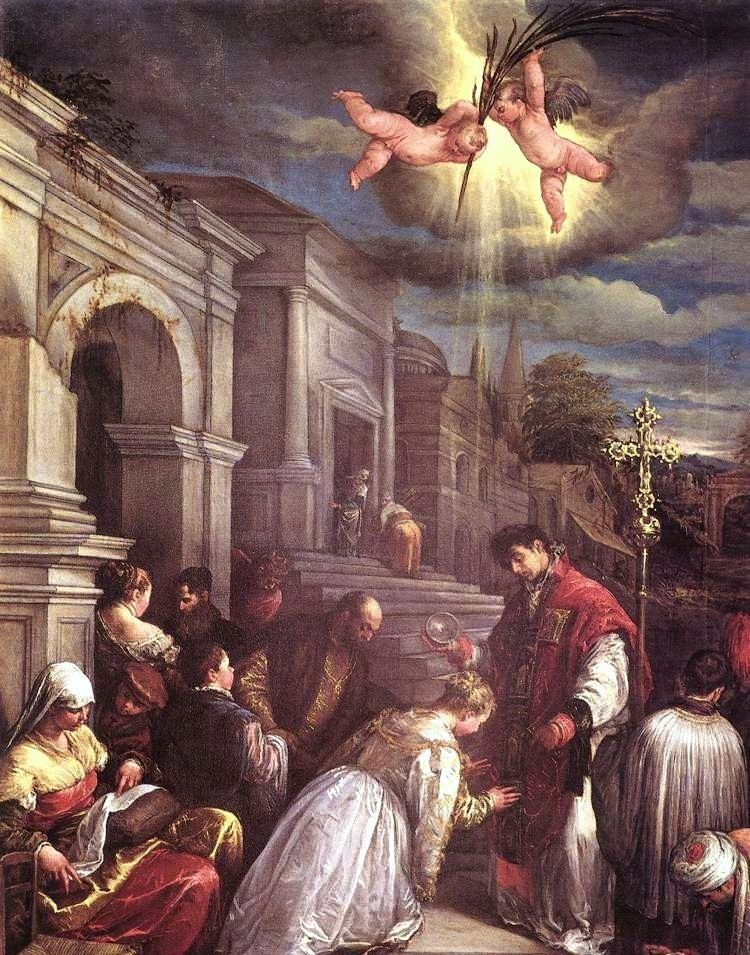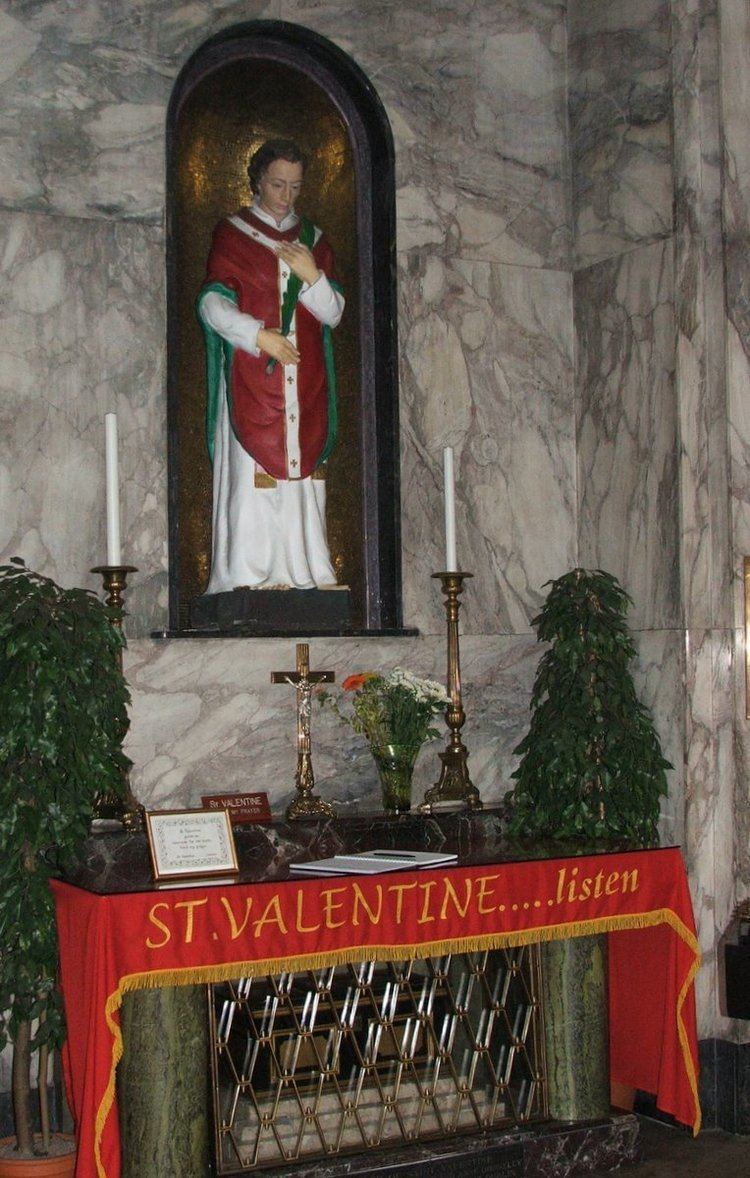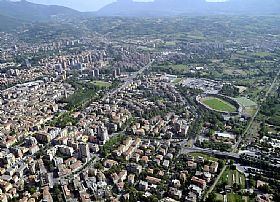Country Italy Population 113,030 (2010) Region Umbria | Province Province of Terni Area 211 km2 | |
 | ||
Mayor Leopoldo Di Girolamo (Democratic Party) | ||
Map of Terni
Terni [ˈtɛrni] (Latin: Interamna Nahars) is a city in the southern portion of the Region of Umbria in central Italy. The city is the capital of the province of Terni, located in the plain of the Nera river. It is 104 kilometres (65 miles) northeast of Rome.
Contents
- Map of Terni
- Welcome to cascata delle marmore marmores falls terni italy
- History
- Economy
- Transport
- Main sights
- Sport
- Notable natives
- Twin towns and sister cities
- References

It was founded as an Ancient Roman town.

During the 19th century, steel mills were introduced and led the city to have a role in the second industrial revolution in Italy. Because of its industrial importance, the city was heavily bombed during World War II by the Allies. It still remains an industrial hub, and has been nicknamed "The Steel City" and the "Italian Manchester".
Terni also advertises itself as a "City of Lovers", as its patron saint, Saint Valentine, was born and became a bishop here and the remains are preserved in the basilica-sanctuary in his honor.
Welcome to cascata delle marmore marmores falls terni italy
History
The city was founded around the 7th century BC by the Umbrians Naharti, in a territory inhabited (as testified by archaeological excavations of several necropolises) as early as the Bronze Age. In the 3rd century BC it was conquered by the Romans and soon became an important municipium lying on the Via Flaminia. The Roman name was Interamna, meaning "in between two rivers". During the Roman Empire the city was enriched with several buildings, including aqueducts, walls, an amphitheater, a theater, temples and bridges.
After the Lombard conquest in 755 Terni lost prominence when it was reduced to a secondary town in the Duchy of Spoleto. In 1174 it was sacked by Frederick Barbarossa's general, Archbishop Christian of Mainz. In the following century Terni was one of sites visited frequently by St. Francis to give sermons.
In the 14th century Terni issued its own constitution, and from 1353 the walls were enlarged, and new channels were opened. As with many of the Italian communes of the Late Middle Ages, it was beset by civil unrest between the partisans of the Guelphs and Ghibellines, and later between the Nobili and Banderari (Terni's borghesi). Later it joined the Papal States. In 1580 an ironwork, the Ferriera, was introduced to work the iron ore mined in Monteleone di Spoleto, starting the traditional industrial connotation of the city. In the 17th century, however, the population of Terni declined further due to plagues and famines.
In the 19th century, Terni took advantage of the Industrial Revolution and of plentiful water sources in the area. New industries included a steelwork, a foundry, as well as weapons, jute and wool factories. In 1927 Terni became capital of the province. The presence of important industries made it a favorite target for the Allied bombardments in World War II. On August 11, 1943, a massive bombardment devastated the city. It was the first of the 108 air strikes that destroyed 80% of Terni's buildings and buried under the rubble about 1000 civilians. Despite this, industrial environment increased quickly after the war.
Economy
The city has three important industrial hubs: the first one is the Stainless Steel Area, called AST (part of the group ThyssenKrupp) and is a wide area located in the east part of Terni. West of the town, there is a second industrial hub, known as "Area Polymer", with four different chemical multinational industries. The third industrial hub is Italeaf, which controls TerniEnergia, a company listed on STAR segment of Borsa Italiana, that is active in the renewable energy sector, and promotes and develops technological star-ups in cleantech sector.
Transport
Terni is connected with the A1 motorway, the European route E45 and National Road Flaminia by the RATO, a motorway junction.
Terni railway station is part of the Ancona–Orte railway, and is also a junction station for two secondary lines, the Terni–Sulmona railway (which links Terni with L'Aquila) and the Terni–Sansepolcro railway (FCU) (which serves Perugia). One of the most important national freight stations is located nearby.
The local urban and suburban transport service, ATC, runs 90 bus lines. In the north of the city (Colleluna zone), there are works in progress on the line from Perugia to enable it to be used as a Light rail line.
Main sights
Nearby, at the confluence of the Velino and Nera Rivers, is the Cascata delle Marmore, a 165-metre-high (541-foot) waterfall.
Sport
Ternana Calcio is the main football club in the city. The club have twice played in Italy's first division Serie A (seasons 1972–1973 and 1974–1975). Ternana is currently playing in Serie B (season 2016–2017). The club play at the 22,000-seat Stadio Libero Liberati, named after Italian motorcycle racer Libero Liberati, who was born in Terni, won the 500cc World Championship in 1957, and died while he was training with his Gilera Saturno along the Valnerina road near Terni.
Notable natives
The Roman historian Gaius Cornelius Tacitus is often stated to have been born in Terni, but there is no evidence for the claim, which is circumstantially based on the probable birth there of the emperor of the same name, and on the attested fact that that emperor took care to have his namesake's works widely copied, in the apparent belief that they were related.
Twin towns and sister cities
Terni is twinned with:
